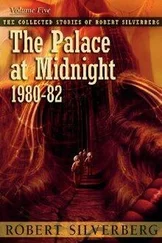Kermit Heartsong - Ukraine - ZBIG's Grand Chess Board & How The West Was Checkmated
Здесь есть возможность читать онлайн «Kermit Heartsong - Ukraine - ZBIG's Grand Chess Board & How The West Was Checkmated» весь текст электронной книги совершенно бесплатно (целиком полную версию без сокращений). В некоторых случаях можно слушать аудио, скачать через торрент в формате fb2 и присутствует краткое содержание. Год выпуска: 2015, Жанр: Политика, на английском языке. Описание произведения, (предисловие) а так же отзывы посетителей доступны на портале библиотеки ЛибКат.
- Название:Ukraine: ZBIG's Grand Chess Board & How The West Was Checkmated
- Автор:
- Жанр:
- Год:2015
- ISBN:нет данных
- Рейтинг книги:4 / 5. Голосов: 1
-
Избранное:Добавить в избранное
- Отзывы:
-
Ваша оценка:
- 80
- 1
- 2
- 3
- 4
- 5
Ukraine: ZBIG's Grand Chess Board & How The West Was Checkmated: краткое содержание, описание и аннотация
Предлагаем к чтению аннотацию, описание, краткое содержание или предисловие (зависит от того, что написал сам автор книги «Ukraine: ZBIG's Grand Chess Board & How The West Was Checkmated»). Если вы не нашли необходимую информацию о книге — напишите в комментариях, мы постараемся отыскать её.
Ukraine: ZBIG's Grand Chess Board & How The West Was Checkmated — читать онлайн бесплатно полную книгу (весь текст) целиком
Ниже представлен текст книги, разбитый по страницам. Система сохранения места последней прочитанной страницы, позволяет с удобством читать онлайн бесплатно книгу «Ukraine: ZBIG's Grand Chess Board & How The West Was Checkmated», без необходимости каждый раз заново искать на чём Вы остановились. Поставьте закладку, и сможете в любой момент перейти на страницу, на которой закончили чтение.
Интервал:
Закладка:
A conspicuous consumption tax was enacted on luxury cars in May of 2013 to increase revenues — fulfillment of a campaign promise made by Putin in 2012. And while it was conceded that the revenues produced would be modest, at least at the outset, Putin supported it because in his words, “It is the right thing to do; there should be such a tax. And the question of social equity, the gap in incomes is a sharp and very important question.” A similar tax on luxury real estate is also being considered (Putin 2013; Putin 2012).
As international political journalist Deena Stryker (2014) states, “Russia is no longer a socialist country, but it hasn’t thrown out the baby with the bathwater and hence should be labeled as an aspiring social-democracy that has yet to develop an advanced parliamentary system such as exist in Northern and Western Europe.”
For any intellectually honest and independent analyst who has studied Putin's words and actions over the course of years, it is apparent that he is attempting to gradually and methodically raise the standard of living for the Russian people. It is also apparent that he views stability, both within Russia and in the outside world that Russia must co-exist with, as crucial, and that the most reliable way to achieve and maintain stability is through a multi-polar world, international law with a strengthened UN as the arbiter, and more equitable development.
It should become clearer to most readers as they continue through this book why the Western elites hate Putin. And it has nothing to do with whether he is democratic or authoritarian.
Part II
The west checkmated
Kermit E. Heartsong
“The Russians have already won beyond their wildest dreams. It's very late in the game.”
— Henry Kissinger
Chapter 5
Ukraine I, Ukraine II
It is important prior to discussing the recent events in Ukraine, beginning in February 2014, and those that took place in Ukraine in 2004, to speak to the mechanisms responsible for them. Mechanisms, which time and time again, Western governments have utilized to destabilize countries, to covertly remove their governments (undesired regimes in favor of pliable or easily controlled regimes), while simultaneously undermining the regime’s sanity, credibility, and morality via a psychological-warfare campaign, designed to make the various charges adhere.
The events that have been unfolding in the Ukraine over the course of the past year thus follow a well-established precedent for what may be described as a new type of warfare that has been and is being employed in numerous countries around the world.
color revolutions
The types of wars range from hot and cold to guerrilla and asymmetrical to economic (unilateral economic sanctions) and political to what might be called “swarm-warfare.”
Swarm warfare targets the social, political, and economic organs of a given government/nation and infects it, much like a virus. As the contagion spreads, swarm-warfare causes the host state to lose any and all viability (governance, control, policing capability), whereby it quickly dies and is transformed into something entirely different (a zombie nation — see Libya). The Madison Avenue brand name for this tactic of swarm warfare is a “color revolution.”
Color revolutions generally have no front lines, are primarily waged in urban areas, utilize social media as viral replicators and thereby a means to more properly direct the infection to a nation-state’s vital organs. The overriding strategy is to manipulate and control the state in an attempt to cause paralysis and ultimately its political death. Simultaneously, outside states responsible for the infection create a self-serving diagnosis, which is promulgated to the media in order to preempt the infected state’s own diagnosis and further drive the infection via public opinion. Fear, propaganda, psychological warfare, agent provocateurs, and false flag terrorist actions form the basis of the outside state’s diagnostic narrative (brutal dictatorship) and treatment (regime change).
The goal of color revolutions as stated by Vladimir Zarudnitsky, the Russian Chief of the General Staff's Main Operations Department, is that they are:
Geared toward destroying a state from within by dividing its population. Commonly accepted rules of warfare are ignored, since official state-run armed forces are not used. Instead, criminal and terrorist forces and private military companies are allowed to act with impunity. (Zarudnitsky 2014)
While an early form of color revolutions was first developed and implemented in the mid-twentieth century in Mohammed Mosaddeq’s Iran (1953), a more advanced strain of color revolutions was developed in the final quarter of the 20th century.
A social scientist, Gene Sharp, was commissioned by NATO to conduct a study on how to make Europe unconquerable. His study, “Making Europe Unconquerable: A Civilian-Based Deterrence and Defense System,” with a foreword by George Kennan, diplomat, political scientist, and “the father of containment” strategy, was published in 1983. Sharp’s study became the operating manual for successive US Governments and their intelligence agencies with regard to viral Warfare (of the non-biological variety) or what would come to be known as “color revolutions.”
The test case or the first practical application of Sharp’s study as implemented by the CIA, was undertaken in China in 1989. The event would later become known as the Tiananmen Square Massacre . The leader of Communist China, Deng Xiaoping, was the target of the first color revolution, as sponsored by the US. As French journalist and author, Thierry Meyssan (2012) describes in his article, “Perfecting the Method of Color Revolutions”:
The United States wanted to topple Deng Xiaoping in favor of Zhao Ziyang. The intention was to stage a coup with a veneer of legitimacy by organizing street protests, in much the same way as the CIA had given a popular facade to the overthrow of Mohammed Mossadegh by hiring Tehran demonstrators (Operation Ajax 1953). The difference here is that Gene Sharp had to rely on a mix of pro-Zhao and pro-US youth to make the coup look like a revolution. (Meyssan 2012)
Tiananmen Square thus bore all the hallmarks of a color revolution — mass student protests blocking government buildings, a steady supply of goods to the protestors (Coleman stoves, training, instruction, and logistics manuals — at the time, unusual for students to have been able to afford), and Molotov cocktails, the seeming weapon of choice for most color revolutions. Additionally, a sub-segment of the rioters trained as agent provocateurs would escalate the violence at the predesignated time. In the case of Tiananmen Square, it would be this third group of protestors , who would use the Molotov cocktails to attack police and soldiers, who were initially unarmed (burning a number of them alive).
However, despite the claims of Western governments and media about the tragedy of the Tiananmen Square Massacre, there was, actually, no massacre at all. Cables of the communications among diplomatic personnel, and in particular from a Chilean diplomat to his US counterpart released in a Wikileaks cable, confirms that:
He [Chilean diplomat] watched the military enter the square and did not observe any mass firing of weapons into the crowds, although sporadic gunfire was heard. He said that most of the troops which entered the square were actually armed only with anti-riot gear — truncheons and wooden clubs; they were backed up by armed soldiers,” a cable from July 1989 said. (Wikileaks 2011)
It was also later discovered, after much disinformation and propaganda had been spread, that the Chinese government’s version of the truth regarding Tiananmen Square was, indeed, accurate and that no massacre had ever taken place.
Читать дальшеИнтервал:
Закладка:
Похожие книги на «Ukraine: ZBIG's Grand Chess Board & How The West Was Checkmated»
Представляем Вашему вниманию похожие книги на «Ukraine: ZBIG's Grand Chess Board & How The West Was Checkmated» списком для выбора. Мы отобрали схожую по названию и смыслу литературу в надежде предоставить читателям больше вариантов отыскать новые, интересные, ещё непрочитанные произведения.
Обсуждение, отзывы о книге «Ukraine: ZBIG's Grand Chess Board & How The West Was Checkmated» и просто собственные мнения читателей. Оставьте ваши комментарии, напишите, что Вы думаете о произведении, его смысле или главных героях. Укажите что конкретно понравилось, а что нет, и почему Вы так считаете.











